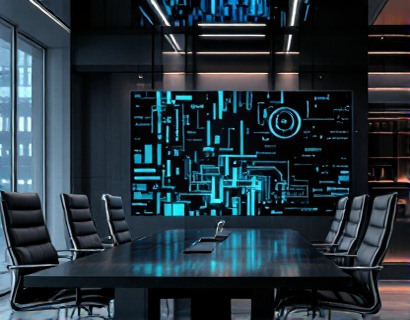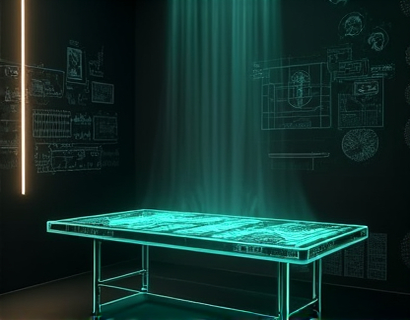Maximizing Architecture Firm Efficiency with Advanced Software Solutions
In the competitive landscape of architecture firms, efficiency and productivity are paramount. Advanced software solutions play a crucial role in streamlining internal processes and enhancing user experience, allowing architects to concentrate on their creative excellence. This article delves into the various ways technology can optimize project management, resource allocation, and client interactions, ultimately leading to improved productivity and collaboration within architecture firms.
Streamlining Project Management
Effective project management is the backbone of any successful architecture firm. Advanced software solutions offer robust tools that simplify the planning, execution, and monitoring of projects. These platforms provide centralized dashboards where project managers can track progress in real-time, assign tasks, set deadlines, and manage budgets. By automating routine tasks such as report generation and status updates, these tools reduce the administrative burden on team members, allowing them to focus on more critical aspects of the project.
One key feature of these software solutions is the ability to integrate with other tools and systems used within the firm. For instance, integration with CAD software ensures that design changes are automatically reflected in the project management system, reducing the risk of errors and miscommunications. This seamless integration enhances the overall efficiency of the project lifecycle, from initial concept to final delivery.
Optimizing Resource Allocation
Efficient resource allocation is essential for maximizing the productivity of an architecture firm. Advanced software solutions provide powerful resource management tools that help firms allocate their human and material resources more effectively. These tools enable managers to visualize resource availability, track workloads, and predict potential bottlenecks.
By leveraging data analytics, these platforms can offer insights into resource utilization patterns, helping firms make informed decisions about staffing and equipment allocation. For example, a software solution might highlight that certain team members are consistently overburdened during specific phases of the project, allowing managers to redistribute tasks more evenly. This not only improves overall efficiency but also enhances job satisfaction and reduces burnout among team members.
Enhancing Client Interactions
Client satisfaction is a critical factor in the success of any architecture firm. Advanced software solutions can significantly enhance client interactions by providing tools for better communication, collaboration, and project visualization. Virtual reality (VR) and augmented reality (AR) integrations, for instance, allow clients to experience designs in a more immersive and interactive way, leading to clearer understanding and faster decision-making.
Project portals and collaborative platforms built into these software solutions enable clients to access project updates, documents, and communication in one centralized location. This transparency builds trust and ensures that clients feel involved throughout the project lifecycle. Additionally, these platforms often include features for collecting and managing client feedback, which can be invaluable for continuous improvement and building long-term relationships.
Improving Internal Collaboration
Collaboration among team members is vital for the success of complex architectural projects. Advanced software solutions foster a collaborative environment by providing tools that facilitate seamless communication and document sharing. Real-time collaboration features allow multiple team members to work on the same document simultaneously, reducing the time spent on back-and-forth revisions and ensuring that everyone is always working with the most up-to-date information.
Version control is another critical aspect of internal collaboration. These software solutions maintain a history of changes, enabling teams to track modifications, revert to previous versions if necessary, and maintain a clear audit trail. This not only enhances efficiency but also reduces the risk of errors and conflicts.
Boosting Productivity through Automation
Automation is a key driver of productivity gains in architecture firms. Advanced software solutions can automate a wide range of tasks, from routine data entry to complex workflows. For example, automated workflows can trigger specific actions based on predefined conditions, such as sending notifications when a task is completed or when a deadline is approaching. This reduces the need for manual intervention and minimizes the potential for human error.
Another area where automation shines is in the generation of standard documents and reports. Templates and pre-built formulas can be used to create consistent and professional-looking documents with minimal effort. This not only saves time but also ensures that all documents adhere to the firm's branding and quality standards.
Enhancing Data Management and Security
Data management and security are paramount in the architecture industry, where sensitive project information and intellectual property must be protected. Advanced software solutions offer robust data management features, including secure storage, access controls, and backup options. These measures ensure that sensitive data is protected from unauthorized access and data loss.
Moreover, these platforms often comply with industry standards and regulations, such as GDPR and LEED, providing an additional layer of security and compliance. By centralizing data management, firms can improve data integrity, reduce redundancy, and ensure that all team members have access to the information they need when they need it.
User Experience and Adoption
For advanced software solutions to be effective, they must provide an exceptional user experience. A well-designed interface that is intuitive and user-friendly can significantly impact the adoption and utilization of the software. Training and support are also crucial in ensuring that team members can fully leverage the features of the software.
Many software providers offer comprehensive onboarding programs, including tutorials, webinars, and dedicated support teams. These resources help users get up to speed quickly and maximize the benefits of the software. Additionally, continuous feedback from users can drive iterative improvements, ensuring that the software evolves to meet the changing needs of the firm.
Case Studies and Success Stories
To illustrate the real-world impact of advanced software solutions in architecture firms, consider a few success stories. One firm implemented a project management tool that integrated with their CAD software, resulting in a 30% reduction in project delivery time. The streamlined workflow and improved collaboration led to higher client satisfaction and repeat business.
Another firm adopted a resource management platform that provided real-time visibility into workforce utilization. By optimizing staffing levels and task assignments, the firm reduced overhead costs by 20% while maintaining or even increasing the volume of projects taken on. The enhanced data insights also helped in strategic planning and growth initiatives.
Conclusion
In conclusion, advanced software solutions offer architecture firms a comprehensive set of tools to streamline internal processes, enhance user experience, and ultimately maximize efficiency. By leveraging these technologies, firms can focus more on creative excellence while ensuring that project management, resource allocation, and client interactions are optimized for success. As the industry continues to evolve, embracing these solutions will be crucial for staying competitive and delivering high-quality projects.










































